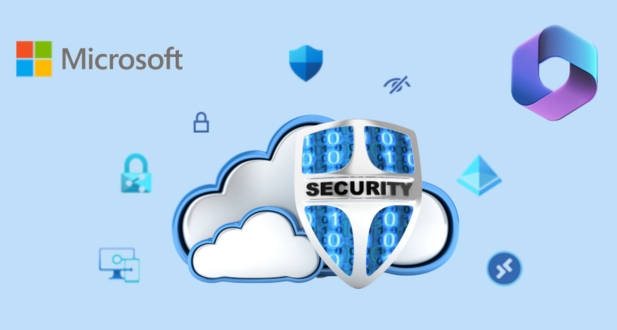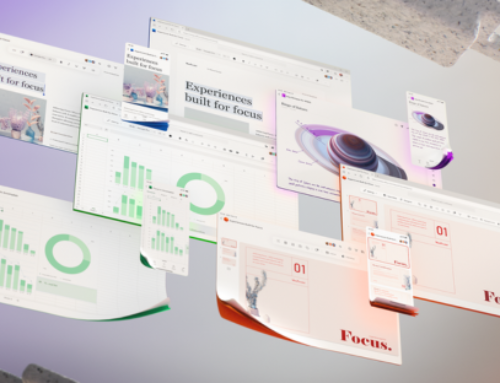Introduction to Advanced Security in Business Premium
In today’s digital landscape, where cyber threats are continually evolving, businesses face unprecedented challenges in safeguarding their sensitive data and operations. This is where the significance of Advanced Security in Business Premium becomes paramount. In this introductory segment, we delve into the core elements that define this robust security offering and underscore its critical role in fortifying businesses against modern cyber threats.
Defining Advanced Security Features
One of the cornerstones of Business Premium lies in its array of advanced security features meticulously designed to address the dynamic nature of cyber threats. From sophisticated malware to targeted phishing attacks, Business Premium stands as a comprehensive shield, offering a multifaceted defense mechanism.
Key Security Features:
- Advanced Threat Protection: Unravel the intricacies of threat protection, exploring how the system detects and mitigates advanced threats in real-time.
- Identity and Access Management: Delve into the role of identity in security, emphasizing the importance of access control and secure user authentication.
- Data Encryption Protocols: Illuminate the encryption methods employed to secure sensitive data, ensuring that confidential information remains impervious to unauthorized access.
Importance of Robust Security
In an era where cyber adversaries are becoming more sophisticated, the importance of robust security cannot be overstated. Advanced Security in Business Premium serves as a bulwark, not only preserving the integrity of data but also ensuring the continuity of business operations in the face of relentless cyber threats.
Guarding Against Cyber Threats:
- Real-time Threat Mitigation: Shed light on the dynamic threat landscape and elucidate how Business Premium ensures real-time mitigation of cyber threats.
- Ensuring Business Continuity: Emphasize the role of advanced security in safeguarding business continuity, illustrating scenarios where resilient security measures mitigate potential disruptions.
Threat Landscape in the Digital Age
In navigating the landscape of cybersecurity, businesses must grapple with an ever-evolving array of threats in the digital age. This section provides a comprehensive overview of the current cyber threats that businesses encounter, delving into the dynamic nature of the threat landscape and its evolutionary trajectory over time.
Overview of Current Cyber Threats
In the interconnected realm of the internet, businesses find themselves in the crosshairs of a diverse range of cyber threats. From insidious malware to cunning phishing attacks, the contemporary threat landscape is characterized by its complexity and adaptability.
Prevalent Cyber Threats:
- Malware Pervasiveness: Examine the prevalence of malware, encompassing viruses, ransomware, and other malicious software targeting vulnerabilities in digital systems.
- Phishing Attacks Sophistication: Explore the sophistication of phishing attacks, highlighting their ability to deceive users through social engineering tactics and masquerading as legitimate entities.
- Data Breaches Impact: Discuss the far-reaching consequences of data breaches, including the compromise of sensitive information, reputational damage, and regulatory repercussions.
Evolution of Security Risks
Understanding the current threat landscape necessitates tracing the evolutionary path of security risks. The techniques employed by cyber adversaries have undergone a significant metamorphosis, adapting to advancements in technology and exploiting emerging vulnerabilities.
Threat Landscape Evolution:
- Shift Toward Sophistication: Analyze how cyber threats have evolved from simple, opportunistic attacks to sophisticated, targeted endeavors, often orchestrated by well-organized cybercriminal entities.
- Technological Advancements Impact: Explore the impact of technological advancements, such as cloud computing and the proliferation of IoT devices, on expanding the attack surface and altering the nature of security risks.
- Evolving Tactics and Techniques: Delve into the changing tactics and techniques employed by cybercriminals, showcasing the constant need for businesses to stay ahead in the cybersecurity arms race.
Business Premium Security Suite Overview
The cornerstone of safeguarding businesses in the digital era lies in a robust security suite, and Business Premium exemplifies this with its comprehensive array of tools and components. This section provides a detailed examination of the Business Premium Security Suite, dissecting its integral components and illustrating how these elements seamlessly integrate with everyday operations.
In-Depth Look at Business Premium Security Suite
Components Breakdown:
Unveil the inner workings of the Business Premium Security Suite, dissecting each component to showcase the multifaceted defense it provides.
- Advanced Threat Protection: Explore how this component identifies and neutralizes advanced threats, including malicious attachments and phishing attempts.
- Identity and Access Management: Delve into the role of identity protection, securing user access and thwarting unauthorized logins.
- Data Loss Prevention: Examine the mechanisms in place to prevent accidental or intentional data leaks, safeguarding sensitive information.
- Device Management: Highlight how Business Premium facilitates secure device management, ensuring the integrity of devices accessing business resources.
Integration with Productivity Tools
Seamless Fusion with Daily Operations:
- Business Premium transcends the conventional perception of security suites by seamlessly integrating with the productivity tools that businesses use daily.
- Microsoft 365 Integration: Illustrate how the security suite is intricately woven into the Microsoft 365 environment, providing a unified experience for users.
- Real-time Collaboration Security: Explore the suite’s contribution to secure collaboration, emphasizing the protection of shared documents, emails, and collaborative workflows.
- Enhanced Email Security: Discuss how Business Premium enhances email security, ensuring that communication remains confidential and free from malicious elements.
Advanced Threat Protection
Navigating the digital landscape requires a vigilant defense against evolving cyber threats. Business Premium’s Advanced Threat Protection (ATP) serves as a bulwark, and in this section, we delve into its sophisticated components, focusing on email security and measures to fortify endpoints and devices.
Email Security
Fortifying the Digital Gateway:
Email, a ubiquitous communication tool, is also a primary vector for cyber threats. Business Premium’s ATP comprehensively addresses email security concerns.
- Malware Detection and Prevention: Explore how ATP employs advanced algorithms to detect and prevent the infiltration of malicious software through email attachments.
- Phishing Attack Prevention: Delve into the mechanisms that identify and thwart phishing attempts, safeguarding users against deceptive email campaigns.
- Link Protection: Discuss how ATP enhances link security, ensuring that hyperlinks within emails do not lead to malicious websites.
Endpoint Security
Securing Endpoints and Devices:
Endpoints, including devices such as computers and mobile devices, are common targets for cyber threats. ATP extends its protective umbrella to fortify these crucial access points.
- Device Management: Illustrate how ATP facilitates secure device management, ensuring that only authorized and compliant devices access business resources.
- Endpoint Detection and Response: Explore how ATP employs advanced techniques for the detection and response to potential threats at the endpoint level.
- Data Encryption on Endpoints: Highlight the encryption protocols in place to secure data on endpoints, mitigating the risk of data breaches.
Identity and Access Management
In the realm of cybersecurity, effective Identity and Access Management (IAM) serves as a linchpin for ensuring the integrity and security of organizational resources. This section delves into the pivotal role of identity in security and explores the tools and measures embedded in Business Premium to control user access and permissions.
Role of Identity in Security
The Cornerstone of Security:
Robust identity management is not merely a component of security; it is the bedrock upon which a secure digital environment is built. Business Premium recognizes the centrality of identity in the security paradigm.
- Authentication Protocols: Discuss the importance of strong authentication protocols in verifying the identity of users, preventing unauthorized access.
- Single Sign-On (SSO): Explore the convenience and security benefits of SSO, streamlining user access across various applications with a single set of credentials.
- Multi-Factor Authentication (MFA): Highlight the enhanced security offered by MFA, requiring users to provide multiple forms of identification for access.
Access Control Measures
Empowering Secure Access:
Controlling user access and permissions is a dynamic aspect of IAM. Business Premium integrates advanced tools to precisely manage access and permissions, aligning with the principle of least privilege.
- Role-Based Access Control (RBAC): Delve into the implementation of RBAC, assigning specific roles to users based on their responsibilities and granting access accordingly.
- Conditional Access Policies: Explore how conditional access policies add an adaptive layer to security, dynamically adjusting access based on user context and risk factors.
- Audit Trails and Monitoring: Discuss the importance of auditing access, monitoring user activities, and generating comprehensive audit trails for security analysis.
Data Encryption and Privacy Measures
In an era where data is a critical asset for businesses, ensuring its confidentiality and integrity is paramount. Business Premium places a strong emphasis on data encryption and privacy compliance, providing robust measures to safeguard sensitive information. This section elucidates the encryption protocols in place and underscores the significance of adhering to data protection regulations.
Data Encryption Protocols
Fortifying Confidentiality through Encryption:
Data encryption stands as a formidable shield against unauthorized access and data breaches. Business Premium employs advanced encryption methods to fortify the confidentiality of sensitive information.
- End-to-End Encryption: Explore the concept of end-to-end encryption, ensuring that data remains encrypted throughout its entire lifecycle, from creation to transmission and storage.
- Transport Layer Security (TLS): Explain how TLS protocols secure data during transit, safeguarding it against interception and unauthorized access.
- File and Folder Encryption: Highlight how specific files and folders can be encrypted, adding an additional layer of protection to critical business data.
Privacy Compliance
Navigating the Regulatory Landscape:
Adhering to data protection regulations is not just a best practice; it is a legal and ethical imperative. Business Premium aids businesses in ensuring privacy compliance.
- General Data Protection Regulation (GDPR) Compliance: Discuss how Business Premium facilitates compliance with GDPR, addressing the rights and privacy of individuals regarding their personal data.
- Health Insurance Portability and Accountability Act (HIPAA) Compliance: Explore the measures in place to comply with HIPAA, particularly crucial for businesses operating in the healthcare sector.
- Continuous Compliance Monitoring: Emphasize the importance of continuous monitoring to ensure ongoing compliance with evolving data protection regulations.
Advanced Security Reporting and Analytics
In the ever-evolving landscape of cybersecurity, staying ahead of potential threats requires not only robust defense mechanisms but also real-time monitoring and proactive measures. This section explores the tools Business Premium offers for real-time security monitoring and the role of analytics in shaping proactive security strategies.
Real-time Security Monitoring
Vigilance in the Digital Realm:
Business Premium goes beyond static security measures by providing dynamic, real-time monitoring tools. These tools offer continuous surveillance, enabling swift responses to emerging threats.
- Security Information and Event Management (SIEM): Discuss how SIEM tools collect and analyze security data in real time, providing insights into potential security incidents.
- Incident Response Automation: Explore the benefits of automated incident response, ensuring quick reactions to security events without manual intervention.
- User and Entity Behavior Analytics (UEBA): Highlight how UEBA tools monitor and analyze user behavior, identifying deviations that may indicate potential security risks.
Analytics for Proactive Measures
Shaping a Proactive Security Posture:
Business Premium leverages analytics not just for incident response but also for proactive security measures. By analyzing patterns and trends, businesses can anticipate and mitigate potential threats.
- Predictive Analytics: Discuss how predictive analytics use historical data to forecast potential security threats, enabling proactive measures to be taken in advance.
- Threat Intelligence Integration: Explore how threat intelligence, combined with analytics, enhances the ability to anticipate and prepare for emerging threats.
- Continuous Improvement through Analysis: Emphasize the iterative nature of security analytics, where continuous analysis leads to improvements in security protocols and measures.
Best Practices for Implementing Advanced Security
Ensuring the effectiveness of advanced security measures is not solely reliant on technology; it equally hinges on best practices that involve educating users and conducting regular assessments. In this section, we delve into the crucial best practices that businesses can adopt to maximize the benefits of Advanced Security in Business Premium.
User Training and Awareness
Empowering the First Line of Defense:
The human element is a vital component of any security framework. Business Premium emphasizes the significance of user education in fortifying the first line of defense against cyber threats.
- Phishing Awareness Programs: Discuss the importance of training programs that educate users on identifying and mitigating phishing attempts, reducing the risk of falling victim to social engineering tactics.
- Secure Password Practices: Emphasize the role of strong and unique passwords in bolstering security, coupled with educating users on the importance of password hygiene.
- Interactive Training Modules: Illustrate the benefits of interactive training modules that simulate real-world scenarios, enabling users to develop practical skills in identifying and responding to security threats.
Regular Security Audits
Assessing and Enhancing Security Posture:
Regular security audits are a fundamental aspect of maintaining a robust security posture. Business Premium integrates features that facilitate and encourage periodic security assessments.
- Vulnerability Assessments: Discuss the importance of identifying and addressing vulnerabilities through regular assessments, ensuring that potential entry points for cyber threats are mitigated.
- Penetration Testing: Explore the proactive approach of penetration testing, simulating real-world cyber-attacks to assess the resilience of security measures and identify potential weaknesses.
- Compliance Audits: Highlight the role of compliance audits in ensuring that security measures align with industry regulations and standards, reducing the risk of legal and regulatory consequences.
Case Studies: Successful Implementations
The true measure of the efficacy of Advanced Security in Business Premium lies in its real-world impact on businesses. In this section, we delve into case studies that showcase tangible success stories, extracting valuable insights and best practices learned from these implementations.
Real-world Examples
Tangible Benefits Unveiled:
Businesses across diverse sectors have realized significant benefits by integrating Advanced Security in Business Premium. These real-world examples highlight the transformative impact on organizations.
- Financial Sector Success: Explore a case study where a financial institution enhanced its cybersecurity posture, safeguarding sensitive financial data and meeting stringent compliance requirements.
- Healthcare Security Reinforcement: Illustrate a scenario where a healthcare organization successfully implemented Business Premium, securing patient records and ensuring HIPAA compliance.
- Manufacturing Industry Resilience: Showcase how a manufacturing company fortified its operations against cyber threats, ensuring the secure integration of Industry 4.0 technologies.
Lessons Learned and Best Practices
Extracting Insights for Future Success:
Success stories not only inspire but also provide valuable lessons and best practices that businesses can leverage in their own implementations.
- User Training Impact: Discuss how successful implementations often involve comprehensive user training programs, fostering a culture of cybersecurity awareness and responsibility.
- Customization for Industry Needs: Highlight the importance of tailoring security measures to meet industry-specific needs, showcasing how flexibility and customization contribute to successful outcomes.
- Continuous Improvement: Emphasize the iterative nature of security, where continuous improvement based on lessons learned from successful implementations is crucial for staying ahead of evolving threats.
Future Trends in Advanced Security
As the digital landscape continues to evolve, so does the realm of cybersecurity. In this section, we delve into the anticipated future trends in Advanced Security, exploring emerging technologies and predicting how security features may evolve to counter the ever-changing threat landscape.
Emerging Technologies
Frontiers of Security Innovation:
The future of Advanced Security is intertwined with the integration of cutting-edge technologies. Businesses can prepare for upcoming advancements that will redefine the security landscape.
- Artificial Intelligence (AI) in Security: Explore how AI will play a pivotal role in threat detection and response, leveraging machine learning algorithms to analyze patterns and identify anomalies.
- Zero Trust Architecture: Discuss the paradigm shift towards Zero Trust, where trust is never assumed, and continuous verification is required, mitigating the risks associated with traditional perimeter-based security.
- Biometric Authentication Advancements: Illustrate how biometric authentication methods, such as facial recognition and fingerprint scanning, will become more sophisticated, enhancing identity verification.
Predictions for Security Landscape
Shaping the Future Security Ecosystem:
Predicting the trajectory of the security landscape is essential for businesses aiming to stay ahead of emerging threats. Several trends are expected to shape the future of Advanced Security.
- Extended Detection and Response (XDR): Discuss how XDR platforms will integrate various security solutions, providing a holistic and centralized approach to threat detection and response.
- Quantum-Safe Cryptography: Explore the need for cryptographic systems resilient to quantum computing, as the emergence of quantum technologies poses a potential threat to current encryption methods.
- Rise of Cybersecurity Automation: Illustrate how automation will become a cornerstone of cybersecurity, streamlining routine tasks, and enabling rapid response to cyber threats.
Conclusion: Safeguarding Business with Advanced Security
In the dynamic and interconnected digital landscape, the importance of robust cybersecurity measures cannot be overstated. Business Premium’s Advanced Security stands as a formidable shield, offering a comprehensive suite of tools and features designed to safeguard businesses from an ever-evolving array of cyber threats.
Holistic Protection and Adaptability
Business Premium’s Advanced Security isn’t merely a set of tools; it represents a holistic approach to cybersecurity. From real-time threat monitoring to proactive measures through analytics, the suite ensures a multifaceted defense. Its adaptability shines through in the integration of emerging technologies, keeping pace with the evolving threat landscape.
User-Centric Security and Continuous Improvement
Recognizing the crucial role of the human element in cybersecurity, Business Premium places a strong emphasis on user training and awareness. By fostering a culture of cybersecurity responsibility, businesses can empower their first line of defense against social engineering tactics.
Moreover, the suite encourages continuous improvement through regular security audits and the extraction of insights from successful case studies. This iterative approach ensures that security measures evolve in tandem with emerging threats, providing businesses with a proactive stance in the face of cybersecurity challenges.
The Path Forward
As businesses navigate an increasingly complex digital environment, the path forward involves not only adopting advanced security measures but also cultivating a cybersecurity mindset. Business Premium’s Advanced Security is not just a tool; it’s a strategic ally, empowering businesses to thrive securely in the digital age.
In conclusion, the commitment to securing businesses is not a one-time effort but an ongoing journey, and with Business Premium’s Advanced Security, that journey is fortified with resilience, adaptability, and a proactive approach to emerging cybersecurity challenges.









